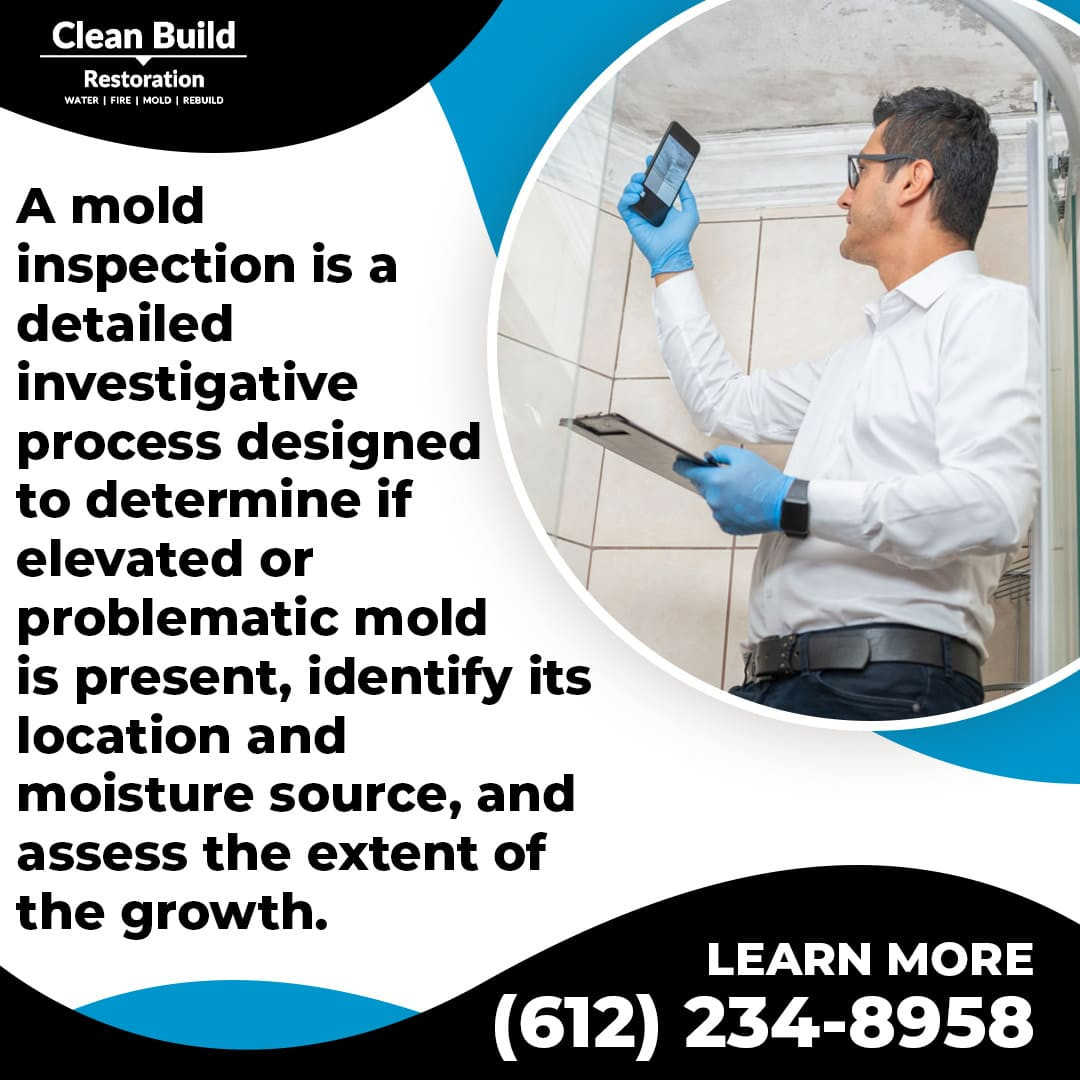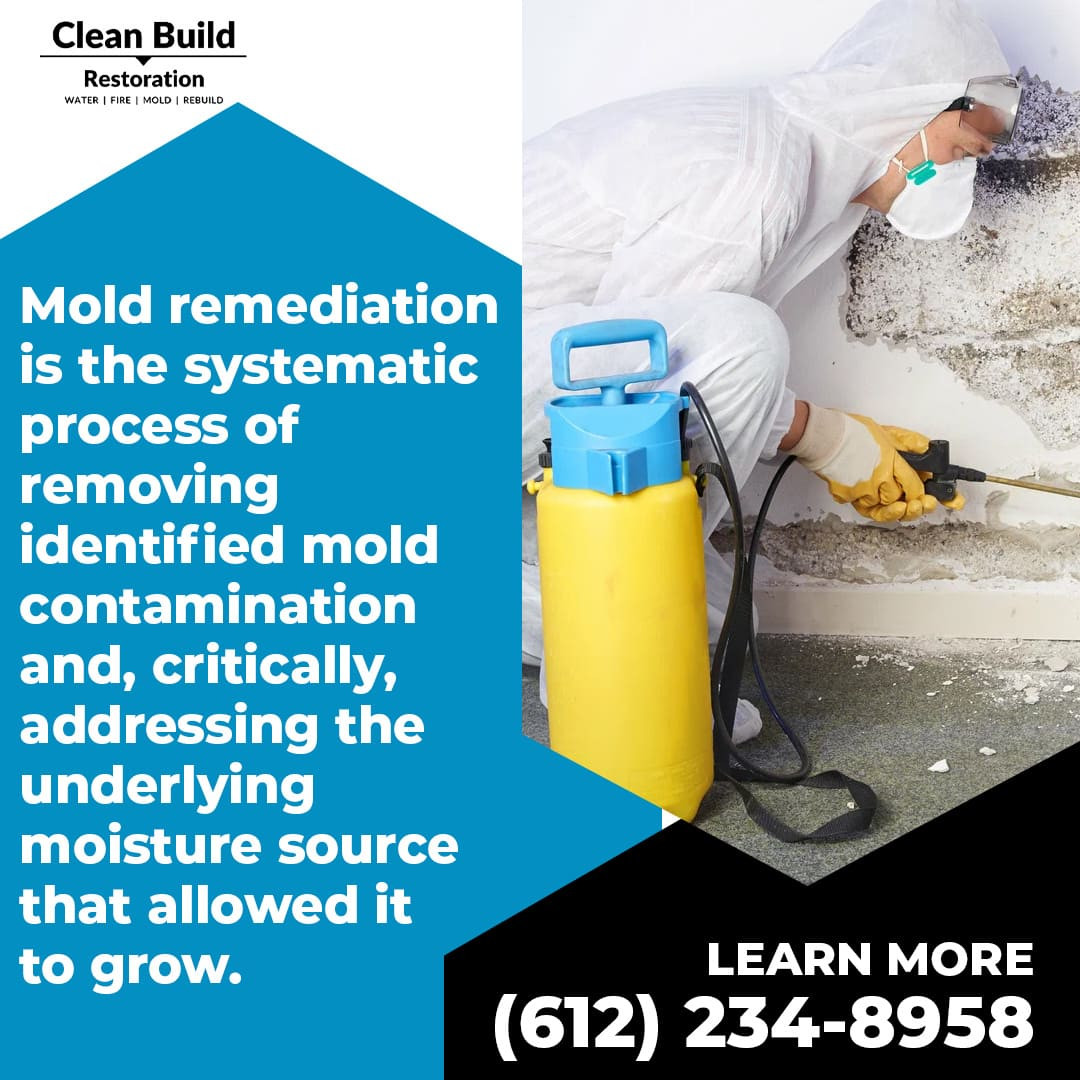Mold Inspection vs. Mold Remediation in Chanhassen: Knowing the Difference
Eden Prairie, United States - May 7, 2025 / Clean Build Restoration /
Eden Prairie, MN — Clean Build Restoration today highlighted the important distinctions between mold inspection and mold remediation services. The company aims to help Chanhassen area residents better understand how to approach potential mold issues in their properties effectively and avoid unnecessary steps or costs in mold cleanup.

Understanding Mold Inspection
Many homeowners may be unsure whether they need a mold inspection or immediate remediation when they suspect mold. Clean Build Restoration explains that inspection is typically the crucial first step. A mold inspection is a detailed investigative process designed to determine if elevated or problematic mold is present, identify its location and moisture source, and assess the extent of the growth. It provides the necessary information before any cleanup decisions are made.
The Inspection Process Explained.
Inspectors conduct thorough visual checks, examining areas prone to moisture, like basements, attics, crawl spaces, bathrooms, and kitchens. They look for visible signs of mold growth or indicators of water damage, such as staining or material deterioration, and note any musty odors. Tools like moisture meters are used to detect dampness in building materials, while thermal imaging cameras can sometimes help identify hidden moisture pockets behind walls or ceilings. If mold is suspected but not visible, or if specific identification is needed, inspectors may collect air or surface samples for laboratory analysis.
When An Inspection Is Recommended
An inspection is often recommended after water damage events, when persistent musty odors are detected, if visible discoloration or growth appears, to investigate potential occupant health symptoms, or as a prudent step during real estate transactions in the Chanhassen area.
Defining Mold Remediation
Mold remediation is the process of removing mold and addressing the moisture source that allows it to grow. Without fixing the moisture issue, mold is likely to return. Professional remediation follows industry standards to guarantee safety and effectiveness.
Key Stages Of Remediation
The mold remediation process involves several key stages. First, containment barriers are erected using plastic sheeting and often negative air pressure machines to isolate the work area. This prevents mold spores disturbed during removal from spreading to unaffected parts of the property. Second, mold-contaminated porous materials, such as drywall, insulation, or carpeting, which cannot be adequately cleaned, are carefully removed and disposed of according to appropriate guidelines. Non-porous materials like glass or metal are meticulously cleaned. Third, the contained area and adjacent surfaces are thoroughly cleaned, often involving HEPA vacuuming to capture microscopic spores. Finally, steps are taken to address the moisture problem, which might involve repairing leaks, improving ventilation, or managing humidity levels.
When Remediation Becomes Necessary
Remediation follows an inspection that confirms a mold problem requiring this level of professional intervention, particularly for larger areas (commonly over 10 square feet) or when contamination involves hazardous water sources.
Why The Distinction Helps Homeowners
Understanding the difference between inspection and remediation matters significantly for Chanhassen homeowners. It empowers them to make sound decisions regarding their property and health.
Avoiding Unnecessary Costs And Efforts
Starting with an inspection helps prevent spending on unnecessary or misdirected remediation. It provides a clear plan, avoids guesswork, and guides cleanup to focus on the real problem areas, such as hidden mold.
Addressing The Root Moisture Problem
Furthermore, proper remediation, guided by inspection findings, focuses on correcting the root cause – the moisture issue. Whether it's a slow plumbing leak, foundation seepage, inadequate bathroom ventilation, or high basement humidity, fixing the source is essential for a lasting solution.
Protecting Property Value In Chanhassen
This distinction also impacts property value; documented professional inspection and remediation can reassure potential buyers in Chanhassen, whereas unresolved mold issues can complicate sales.

Guidance On Selecting Mold Services
When seeking mold services in Chanhassen, homeowners are advised to choose carefully.
Selecting A Qualified Remediation Company
For remediation work, homeowners should look for an established, insured company with specific expertise in mold removal that adheres to recognized industry standards, such as those set by the IICRC. Asking potential remediation companies about their specific containment procedures, worker safety protocols, how they protect the rest of the home, and whether they provide written contracts is advisable. Clean Build Restoration meets these criteria, offering experienced mold remediation services in the Chanhassen area.
About Clean Build Restoration
Clean Build Restoration is a full-service restoration firm based in Eden Prairie, MN. The company assists residential and commercial property owners with recovery from water damage, fire incidents, and mold growth. Services range from emergency water mitigation and roof tarping to detailed mold remediation and complete structural rebuilds. Clean Build Restoration is certified, bonded, and insured, providing reliable and professional assistance throughout the restoration process. The team focuses on effective recovery using appropriate equipment and methods.
Contact Clean Build Restoration at (612) 234-8958 or email them at pam.holmes@cleanbuildrestoration.com for mold removal and mold cleanup.

Contact Information:
Clean Build Restoration
7887 Fuller Road Suite 113
Eden Prairie, MN 55344
United States
Jim Wilking
(612) 234-8958
https://cleanbuildrestoration.com/
Original Source: https://cleanbuildrestoration.com/mold-inspection-vs-mold-remediation-in-chanhassen-knowing-the-difference/



